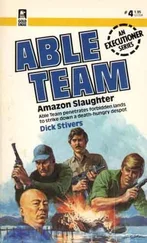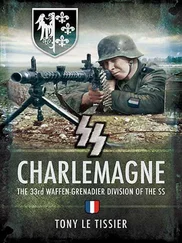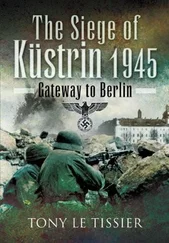Totally exhausted, an estimated 30,000 people, including 5,000 civilians, reached General Wenck’s lines, leaving behind 13,000 prisoners and over 5,000 killed. [14] Kollatz: ‘Die Front an der Elbe 1945’, p. 65.
Busse later suggested that some 40,000 men and several thousand refugees reached Wenck’s lines. Other figures are lower. Koniev says that about 30,000 of the 200,000 who broke out of the Halbe pocket reached the Beelitz area, but were then set upon again by his forces and that at the most only 3–4,000 could have got through to 12th Army. In any case, whatever the numbers, for those who had achieved their goal, it had been a considerable physical and mental feat. [15] Busse, ‘Die letzte Schlacht der 9. Armee’, p. 168, describes the break-out as having taken place on the night of 26/27 April and the union with 12th Army on the morning of the 29th, but this is in conflict with Wenck’s chronology and that of other witnesses, and allowance should be made for the fact that Busse’s article was apparently written in captivity some ten years after the event; Wenck, ‘Berlin war nicht mehr zu retten’, pp. 68–9. Koniev, Year of Victory , pp. 180–2, denies the break-out was effective.
On 1 May Marshal Zhukov’s 33rd Army relieved 13th Army as Koniev’s 1st Ukrainian Front redeployed for ‘Operation Prague’. By this stage the reduction of the remaining breakthrough groups had become a secondary task and was completed with varying degrees of success.
FOURTEEN
Retreat to the Elbe
As soon as General Reymann’s troops and the exhausted remains of 9th Army were safely behind XX Corps’ lines, General Wenck gave the order for the withdrawal to the Elbe to begin on the night of 1/2 May. The withdrawal was conducted without pause day and night, the screening divisions taking care to conceal their movement and avoid any conflict that would hamper their progress, the rearguards only fighting delaying actions when necessary. As the artillery pieces ran out of ammunition, they were blown up and abandoned. Tanks, APCs and armoured cars covered the flanks.
At first the Soviets did not pursue too strongly. This was probably due to the after-effects of their May Day celebrations and by the need to re-deploy while 1st Byelorussian Front took over the 1st Ukrainian Front’s responsibilities to release Koniev’s men for the attack on Prague. [1] Gellermann, Die Armee Wenck , p. 105.
The survivors of 9th Army were in no fit state to continue the struggle. Some were fortunate enough to get rides on a shuttle service of trucks and trains to the Elbe organized by 12th Army, but many had to make their own way, as Helmut Jurisch described:
When Bert Fink and I were dropped off by truck in Ziesar, word was going round that the remains of 9th Army were pushing through to the Elbe and going into American captivity.
We both found somewhere to spend the night in Halbe, clean ourselves up and sleep, as we had not done for so long, in soft feather beds. I even had a bit of luck, as the pretty young woman of the house took a fancy to me.
We set off again next morning, and right after Ziesar we stumbled on a paddock with horses belonging to an abandoned farm, and a friendly nag allowed itself to be caught. Inside the farm buildings we found some harness and a rubber-tyred carriage. Although neither of us had any experience with horses, we managed to get the harness on the lovely animal and hitch him to the carriage. Thus we two tankies reverted to being cavalrymen. The drop in capacity from a tank to a one-horsepower wagon that had to take us from the advancing Russians to Fischbeck/Tangermünde went without difficulty. I took over the driving of our one-horsepower wagon, which soon filled with soldiers as we rolled along through the peaceful landscape towards our survival goal. Several kilometres from Genthin we were stopped by a Waffen-SS soldier, with an automatic rifle at the aim, coming out of a wood. This made us uneasy, but he only wanted to secure a place on our wagon for his comrade, who was very ill and exhausted, and for us to take him on to the field hospital in Genthin. The comrades squeezed up together and the SS soldier was given a proper seat, but our youngest comrade, barely 16 years old, had to ride on the step. We soon reached Genthin, found the hospital and something to eat for ourselves and the horse, and moved on again.
Meanwhile I had got used to driving our one-horsepower wagon, so that the drive went without a hitch. That evening we sought accommodation in a village along our route.
Next day I reached Fischbeck in good form with my crew, and turned the horse loose in the green Elbe meadows. We found temporary accommodation in a barn and spied out the land. We found all that we needed for survival in vehicles abandoned in the Elbe meadows: food, underwear, bits of uniform, and also equipment. Only a few soldiers had come across this ‘army supply depot’ so far, as most were streaming directly to the crossing place, where a mass of soldiers were crammed together. We looked for everything that a soldier going on a journey needed; haversack, blankets, tent-half, underwear, long-life sausage, and so on.
On the morning of the next day, it could have been either 4 or 5 May 1945, we joined a column moving towards the Elbe bridge. Far from the bridge the column became stuck and did not move on for a long time. Using my boy-scout experience, I made a reconnaissance of the place with Bert Fink, and when we reached the Elbe bridge we saw the reason for the hold-up. The bridge had collapsed in the middle as a result of demolition, and a plank spanned the gap between the two sections of the bridge sticking up from the water, allowing only a single file of soldiers to pass. As we were so near to our long-desired goal, we tagged on to the head of the column. We were soon across on the other side in Tangermünde, and once more we had made it!
The American soldiers standing on the roadway received us in friendly fashion. They were interested in our watches and cameras but didn’t force us to give them up. I had to hand over my pistol. After a rest in the station area, the march to Stendal was the next stage to prisoner of war camp. [2] Helmut Jurisch in correspondence with the author.
Wenck sent Lieutenant-General Maximilian Reichsfreiherr von Edelsheim, commander of XXXXVIII Panzer Corps, to negotiate the surrender to the American Ninth Army, as the Ninth Army Chief of Staff, Major General James E. Moore reported to his commander, Lieutenant General William L. Simpson, in the following memorandum on 7 May (with original spelling errors):
1. On 4 May 1945, in compliance with your verbal instructions, I proceeded to the Command Post of the 102d Division and, accompanied by Major General Keating, Division Commander, and Brigadier General Fox, Assistant Division Commander, I went to Stendal, for the purpose of interviewing General of the Armored Forces Baron von Edelsheim, representing the Commander-in-Chief of German armies at the Elbe and the Havel. Colonel Loren Williams, Regimental Commander in that sector was also present.
2. General von Edelsheim had previous presented to Brigadier General Fox a request on the part of the German Commander for the surrender of his forces and evacuation of civilians as indicated on the attached inclosure. This formed the basis of our discussion.
3. General von Edelsheim informed me that the forces which he represented were the Twelfth German Army and remnants of the Ninth German Army which had been fighting on the Eastern Front. He stated that the strength of the force was approximately 25,000 unarmed soldiers, 40,000 men in battle formations and 6,000 wounded. He also stated that there were approximately 100,000 civilians in the area which he wished to evacuate to the west bank of the Elbe. He stated that they had a considerable amount of transport and about a week’s supply of food in army stores, plus that which was carried on the individual soldier. He also stated that they had adequate field hospitals and medical personnel to care for their wounded.
Читать дальше












